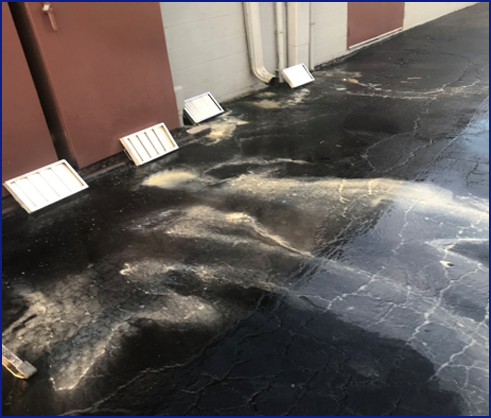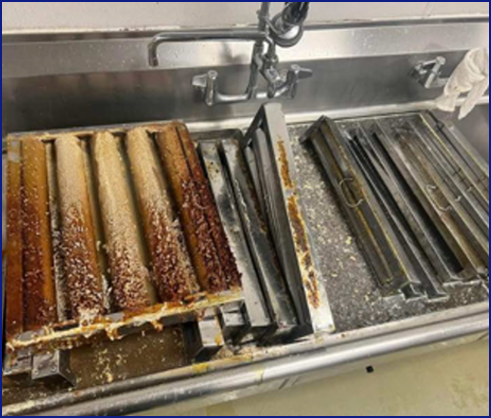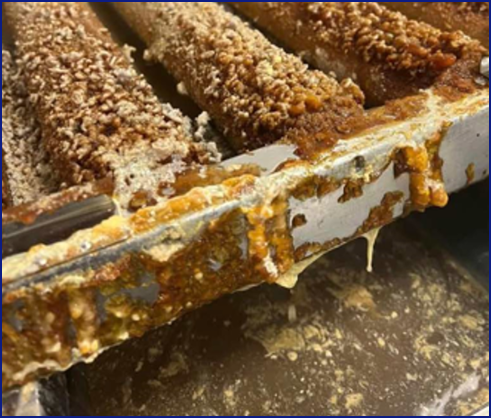- 5649 Industrial Ave. South Connersville, IN 47331
- 800-821-7065
765-825-5868
- Send Us Emaildbradley@filtershineusa.com
When food service establishments clean grease filters on-site, they may not realize it, but they can only clean the surface of the filters (due to the honeycomb shape). Additionally, they are in violation of health code and EPA regulations.
Because grease filters have an open-side offset honeycomb shape, it is almost impossible to thoroughly clean the inside of the filters with on-site cleaning methods.
Three common ways that food service establishments try to clean filters on-site (none of which are acceptable):
Cleaning grease filters in the parking lot is problematic for a couple of reasons. Because of their honey-comb design, only the outside of the filters are cleaned as they are sprayed down. Secondly, the grease-laden water that runs off the filters is washed directly into the stormwater drainage system.
THIS IS A SERIOUS EPA VIOLATION.
Both the restaurant and the company cleaning the filers can be fined.

According to published health codes, food service establishments can only use three-compartment sinks for cleaning and sanitizing service ware. If these sinks are used to clean grease filters, health codes are violated because caustic (high pH) cleaning solutions must be used to soak the filters.
When filters are soaked in sinks, grease-laden water drains into a grease trap.
However, because the soaking solution is so caustic, the water can bypass the grease trap.
When this happens, sanitary sewer overflows can occur and caustic, grease-laden water ends up in the public sewer systems.

When grease filters are cleaned in the dishwasher:
If restaurants choose to clean filters in the dishwasher, they must first be soaked in a sink (which in and of itself is a violated of health code). Once filters are dishwasher-cleaned, workers must empty the dishwasher tank of greasy water then refill it with fresh.
Because of the way dishwashers are plumbed, the grease-laden water bypasses the grease trap and drains into the public sewer system.
